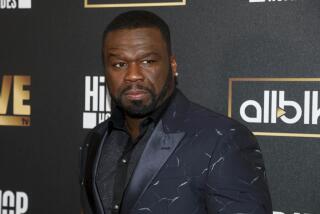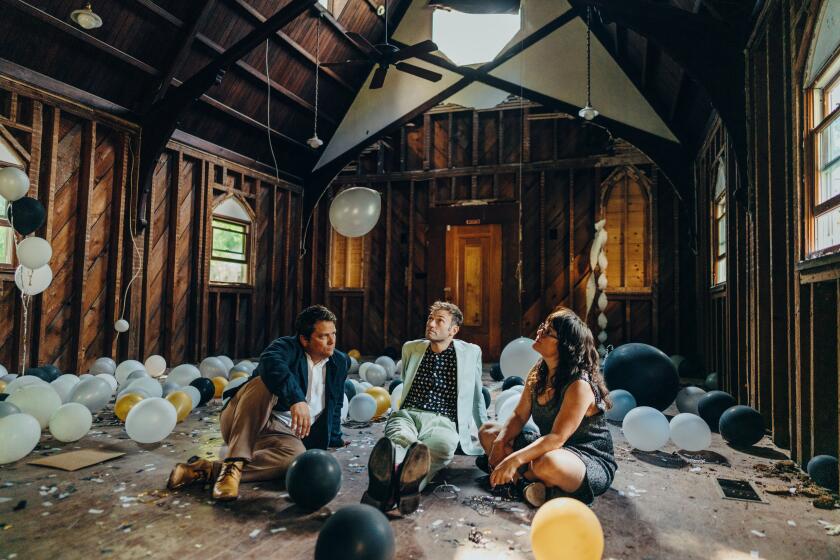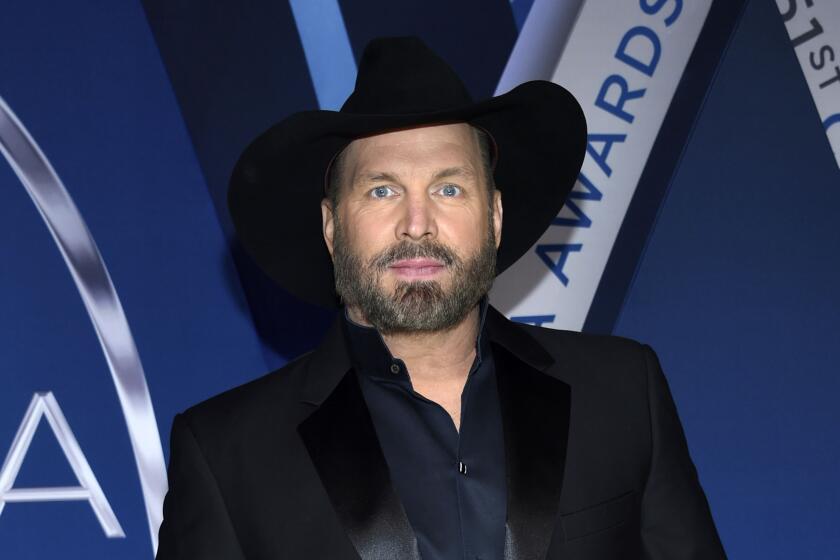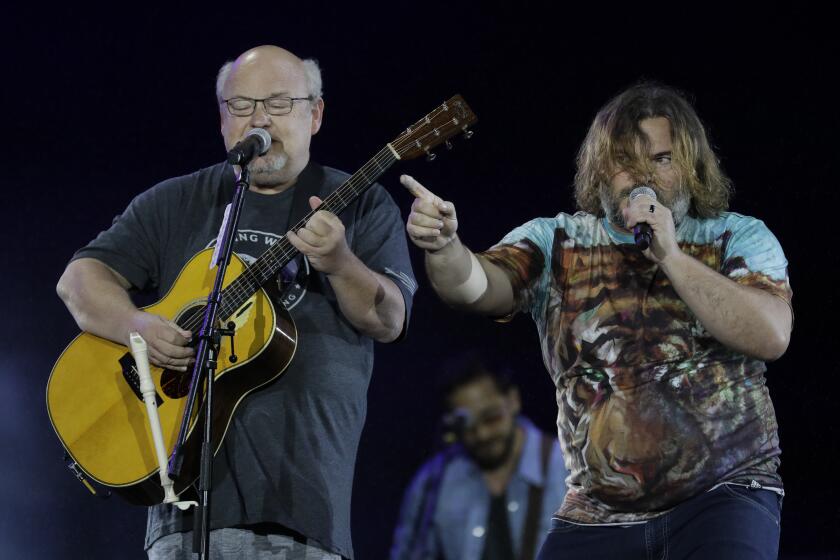POP MUSIC REVIEW : Ever Young
Remember all those times in the ‘80s when you would have been content if Neil Young didn’t play any of the songs from his latest albums in concert?
Now that he has returned to peak form after nearly a decade of uneven musical experiments, there were moments Tuesday at the Sports Arena when you felt cheated that he wasn’t playing more of the songs from his most recent albums.
Though his “Freedom” and “Ragged Glory” collections finished at or near the top of most critics polls in 1989 and 1990, respectively, Young included only six songs--total--from the two albums in a nearly two-hour performance with his longtime allies Crazy Horse.
But don’t let the shortage of songs from the two captivating works make you think that the concert was a disappointment. Young simply demonstrated once again that selfishness is often a virtue in art.
Too few artists do what they want to do in concert rather than what they think the audience expects. Rather than be seduced by critical acclaim or promotional considerations into concentrating on material from the two albums, Young--whose tour continues Friday and Saturday at the Los Angeles Sports Arena--displayed the same artistic independence that has marked his career all the way back to Buffalo Springfield in the ‘60s.
Young drew upon material from throughout his career, not with a sense of providing something for everyone, but to weave a purposeful tapestry that reflects his concerns at the moment. The result was a series of songs about the struggle to find and maintain values and ideals in a troubled and confusing age.
It was a masterful performance--on a par with the recent, triumphant shows by Paul Simon and Sting--and the action began before Young and the powerhouse trio Crazy Horse even took the stage.
After opening sets by Social Distortion and the Buck Pets, both of which performed with convincing passion and authority but only a fraction of the range of the headliner, a stagehand walked on stage from the wings, pulling a 10-foot-tall microphone stand behind him. Finally getting the stand in place, the stagehand tied a bright yellow ribbon around it.
The symbolism seemed obvious until you also noticed the large white peace sign on the black curtain at the rear of the stage. The possible clash between hawk and dove sentiments suggested some of the conflicting emotions that many Americans felt during the Persian Gulf crisis. To further complicate the symbolism, Young--wearing tattered jeans and an Elvis Presley T-shirt under an open black shirt--later played a stirring version of Bob Dylan’s “Blowin’ in the Wind.”
Young didn’t explain his feelings about the war in his few remarks to the audience, but his material touched on the connection between personal values and social responsibility, usually underscoring the complexities of moral decisions rather than declaring easy solutions.
After opening with “My, My, Hey, Hey”--a song about rock ‘n’ roll celebration and individual passion--the veteran rocker moved into “Crime in the City,” a song from the “Freedom” album that speaks about disillusionment and alienation in urban society, from broken families to crooked cops.
He then moved through a barrage of songs--from the recent “Love to Burn” to the early “Cinnamon Girl”--to acknowledge the moments of cynicism and doubt as well as innocence and hope.
While Young is an absorbing performer even in an acoustic setting, he is particularly stirring with Crazy Horse because the trio (Frank Sampedro on guitar, Billy Talbot on bass and Ralph Molina on drums) plays with such force that it encourages Young, both as guitarist and singer, to explore the extremes of his musical instincts.
One of the reasons Young, 45, has been such a major influence on a new generation of bands--from Sonic Youth to Dinosaur Jr.--is that he combines aggression (notably a jarring guitar distortion) and sensitivity in ways that enable the music to comfortably touch on life’s frustrations and fears as well as its tenderness and hopes.
Though he’s in his third decade in rock, Young continues to play with amazing energy. He’s almost always in motion, bouncing around with the guitar as if riding some sort of unruly bronco. Like his songs themselves, Young’s guitar work can be angry and confronting, or sweet and purifying.
For someone who has been acclaimed for so long, Young approaches his work with little sense of pretense. Like Dylan, Young is as quick to acknowledge his own shortcomings as he is to chide others.
Most significantly, Young doesn’t give you his latest album in concert. He shares his latest feelings. That’s what has helped keep him fresh for nearly 25 years of stardom--and why today he stands as much as Dylan as a rock ‘n’ roll model for the young.
More to Read
The biggest entertainment stories
Get our big stories about Hollywood, film, television, music, arts, culture and more right in your inbox as soon as they publish.
You may occasionally receive promotional content from the Los Angeles Times.








